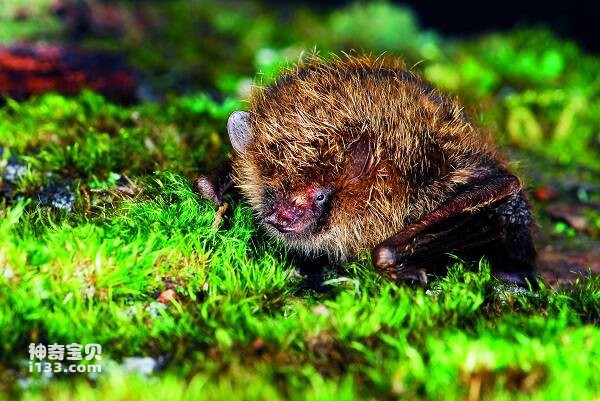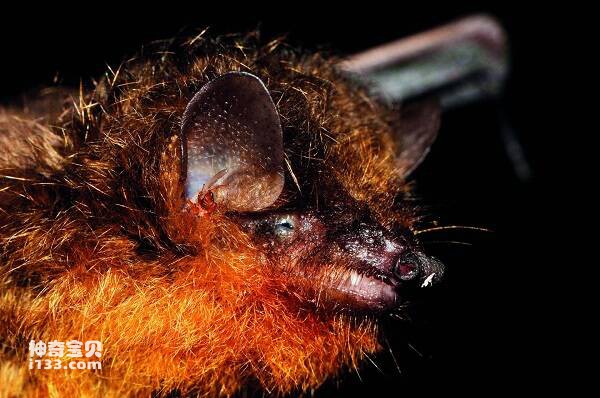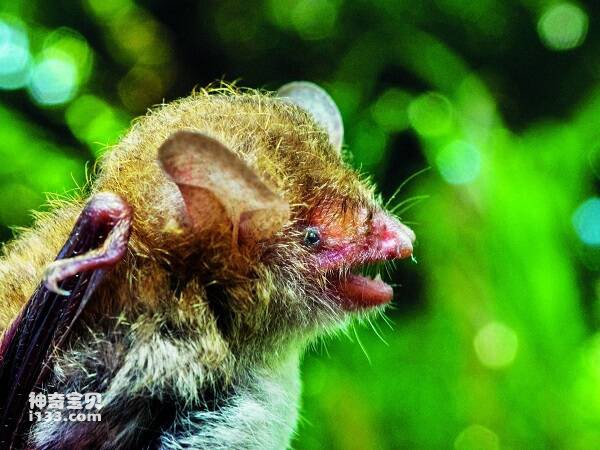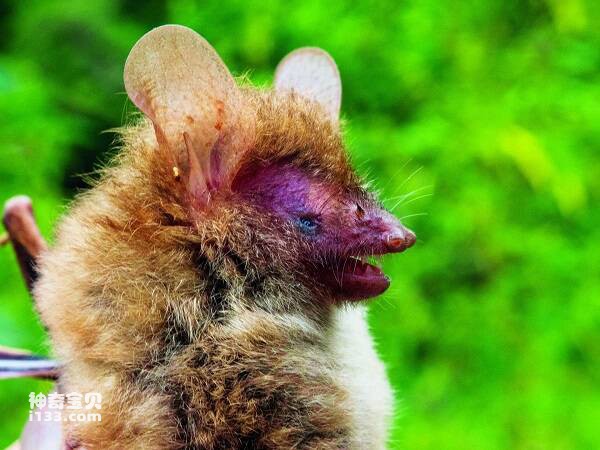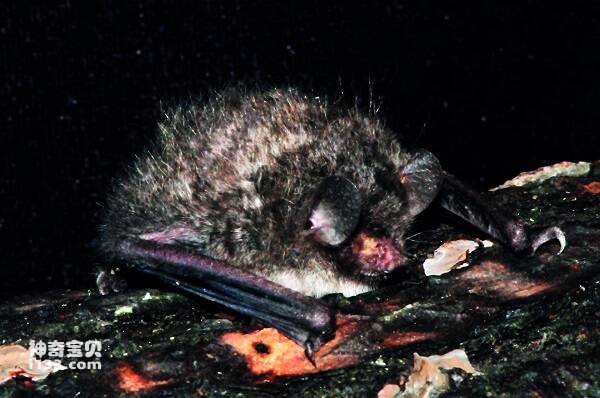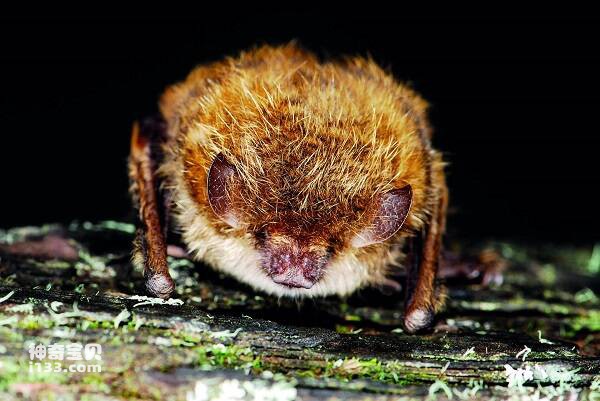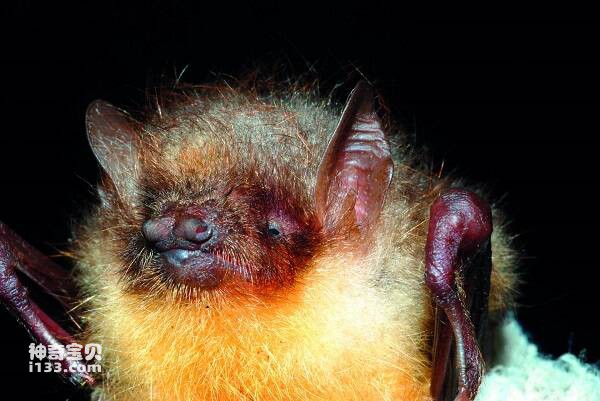Desmodus
IUCN
LCBasic Information
Scientific classification
- name:Desmodus
- Scientific Name:Desmodus
- Outline:Chiroptera
- Family:Batidae V.Bat
Vital signs
- length:About 9 cm
- Weight:About 35g
- lifetime:About 12 years
Feature
It is the only mammal that can fly in the sky and feeds on blood.
Distribution and Habitat
Vampire bats live in almost complete darkness, and their hiding places emit a strong smell of ammonia due to the accumulation of digested blood. They lurk in caves during the day and wait until midnight to fly out of the caves, often flying low about 1 meter above the ground in search of food.
Appearance
Vampire bats are not big, with the largest body length not exceeding 9 cm. They have no exposed tail and their fur is mainly dark brown. They look very ugly. There is a flesh pad with a "U"-shaped groove on the top of the nose. The tip of the ear is triangular. The snout is very short and cone-shaped. The canine teeth are long and sharp. The upper incisors are well developed, slightly triangular, and sharp as a knife. They can pierce the protruding parts of other animals and eat.
Because they suck liquid blood, their esophagus is short and thin, and they have a narrow stomach. Their front and rear limbs and fingertips are connected by wide wing membranes to form a powerful wing for flying. There are webbed feet between their hind limbs. The eyes of vampire bats are larger than those of other bats, but they are useless in the dark cave. Their sense of smell and hearing are very sensitive. Like other bats, they have "echo detectors".
They can emit high-frequency
Details
Vampire bats (scientific name: Desmodus) are a general term for all species of vampire bats in the family Desmodus. There are three species of vampire bats belonging to the family Desmodus and the genus Desmodus. Vampire bats are small in size, have no exposed tail, and their fur is mainly dark brown. They look very ugly and only start to move after dark. They forage for food at regular times every night - sucking the blood of animals. Different species of vampire bats have different blood sucking objects.
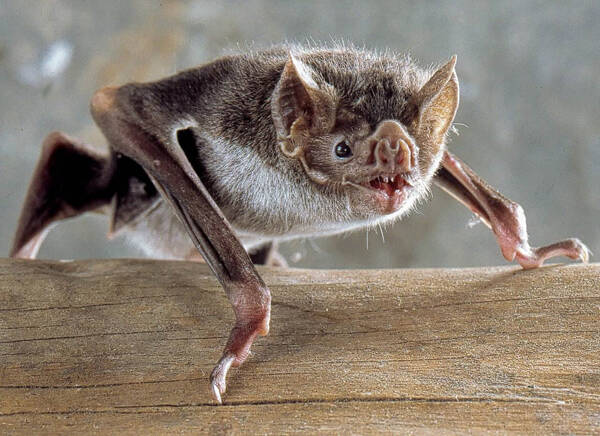
Vampire bats only become active after dark and forage for food at regular times every night. White-winged vampire bats and hairy-legged vampire bats love to suck bird blood, while vampire bats suck mammal blood. They land on the ground near hosts such as cattle, horses, and deer, then climb up their forelimbs to the shoulders or necks, using their upper incisors and canines to cut through the skin several millimeters thick and lick the blood that flows out with their tongues. Sometimes they also suck blood from the feet of livestock. They can jump quickly from time to time to avoid damage caused by the host's defensive actions. When they attack wild horses, they often stick to the horse's legs, pierce the horse's legs with their sharp teeth very quickly, and then suck blood with their pointed mouths. No matter how the wild horses jump and run, they cannot drive away this bat. Bats can calmly stick to wild horses and land on their heads until they are full and fly away with satisfaction. Wild horses often die helplessly in rage, running, and bleeding. Because the anticoagulant in the saliva of vampire bats can slow down the coagulation of blood, blood sucking is quite smooth. Each bat sucks more than 50% of its body weight every night. A 34-gram vampire bat sucks about 18 grams of blood every night.
Vampire bats suck so much blood that it hinders the growth of livestock in some areas. They are also annoying animals because they spread rabies and other diseases. Vampire bats occasionally suck human blood.
Vampire bats always fly cautiously to the target of attack, and then hover in the sky to observe and look for the next opportunity. They often look for sleeping victims, fly directly to it, and more often fly to its side, and then quietly crawl over and climb onto the victim's body, so that it is not easy to be discovered. They choose the bare area of the animal or the part with sparse hair and feathers, such as the anus, around the vulva, cockscomb and wattles, etc. The ears, neck and feet are also often visited. After choosing the right place, they quickly use their sharp teeth to gently cut a shallow small cut in the skin, and then retract to test whether the other party is already asleep. Since the victim does not feel pain, he is usually not awakened and remains quiet. Vampire bats generally suck blood 5 times per second. They will choose different blood sucking parts for different objects. For example, for cows and horses, they bite the back and sides of the body; for pigs, they bite the abdomen; if it is a bird, they bite the legs. Someone once witnessed a vampire bat using its wing hook to climb a rooster's leg, and its own hind legs also stood on the ground. When the rooster walked, it also followed, sucking the rooster's blood as it walked. Because local farmers usually tie up livestock at night to prevent them from getting lost, such livestock are particularly vulnerable to attacks by vampire bats.
The function of the kidneys of vampire bats is extremely interesting. It has a significant ability to concentrate waste. Vampire bats urinate shortly after feeding, quickly excreting most of the water in the blood they suck. This allows the bats to fly back to their habitats lightly after sucking blood, which can reduce energy consumption and reduce danger. After returning to the habitat, they continue to digest the dehydrated blood until feces are formed and no more water is excreted.
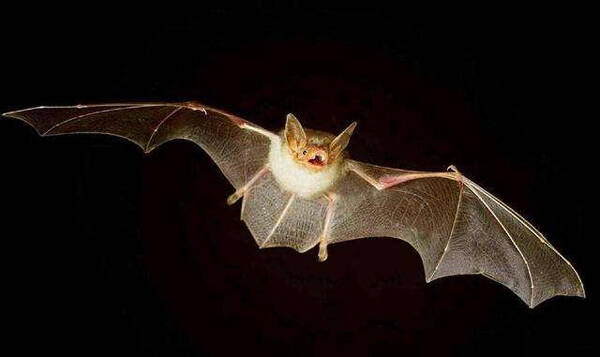
Because vampire bats rely on evolution to acquire a skill that allows them to sneak up on their prey, they are very good "runners" with amazing running ability. After thousands of years of evolution, bats have almost lost the ability to walk on the ground, but vampire bats are an exception. They can move on land to the side of cows, horses or pigs, and when they suck blood, they jump from the ground to the backs of these animals and suck their blood. While other types of bats can only crawl on the ground with their clumsy bodies, vampire bats can "breakdance" on the ground. They can not only move forward, diagonally, and backward, but also jump.
To ordinary people, vampire bats are disgusting and even dirty. But in fact, they are relatively clean and tidy animals. They spend most of their time carefully grooming and often use their sharp claws to comb the fine and soft hair on their bodies. Therefore, it is said that the emperor of the Inca Empire in the 16th century also owned a cloak made of vampire bat skin. When defecating, vampire bats will carefully leave their bodies from the cave wall to avoid dirtying themselves. These feces are piled up under each group of vampire bats, becoming a paradise for some other creatures.
The physiological system of vampire bats has become very special. In addition to bloodthirstiness, they can no longer eat anything else. Vampire bats have a long lifespan, with an average lifespan of 12 years. They suck as much as 100 liters of blood in their lifetime. The longest-lived female vampire bat lived in a cage for 19 and a half years before dying.
Vampire bats have almost no rituals when courting. During mating, males often treat females very wantonly. After mating, many males no longer play any role in family life. After a long gestation period, the cubs are born. The newborn cubs are almost hairless. They hold the nipple with their hook-like milk teeth and cling tightly to the female's body. When changing nipples, they must hold the mother's body tightly with their feet. While searching for food, the female leaves her young at home, where they are cared for by other females, and can even go to other nursing females to feed. Although the nursing period for a young is as long as nine months, it can fly well when it is four or five months old and can accompany its mother out to forage. Usually the female can share a feeding place with her young, but when with other vampire bats, they will compete for the best place to bite. The affectionate relationship between female vampire bats and their young is in stark contrast to their abominable appearance and creepy living habits.
Only 0.5% of bats carry rabies, but of the few cases of rabies reported in the United States each year, most are caused by bat bites. Although the vast majority of bats do not carry rabies, those that are clumsy, disoriented, or unable to fly are actually more likely to come into contact with people. If vampire bats are found near children, mentally disabled people, drunk people, sleeping people or pets, they or their pets should be examined immediately to prevent infection with rabies virus. Bats have small and sharp teeth, and sleeping people will not feel anything even if they are bitten. There is evidence that bats carrying rabies virus may infect victims purely through airborne transmission, sometimes without direct physical contact with the victims. In some countries such as the United Kingdom, it is illegal to handle bats without permission from relevant agencies. In countries and regions where rabies is not endemic, such as most countries in Western Europe, smaller bats are considered harmless to people. People only become nervous when they are bitten by large bats. These countries advocate treating bats well like other wild animals.
Protect wild animals and eliminate game.
Maintaining ecological balance is everyone's responsibility!

